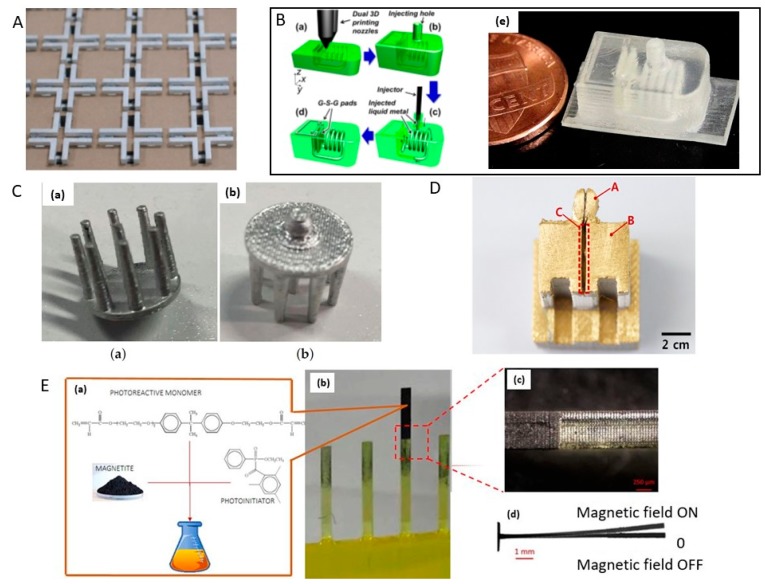Figure 11.
(A) A 3 × 3 array of the 3D folded loop FSS. Reproduced from [33], with permission from IEEE © 2013; (B) 3D printing to form structures with hollow channels and chambers (a). A finished 3D structure with the injection hole (b). Liquid metal filling (c), and surface planarization to remove the injection hole and extra metal (d). Optical photos of the 3D printed structures (e). Reproduced from [34], with permission from IEEE © 2015; (C) Example of a 3D printed EEG electrode coated with silver paint. Reproduced from [35], with permission from the authors © 2016; licensee MDPI, Basel, Switzerland; (D) A picture of 3D printed object deposited with Ti/Au. Reproduced from [36], with permission from IEEE © 2015; (E) Array of cantilevers (b); The high precision at the interface of the two resins (c); Example of superimposition of optical images acquired for the sample in its initial position (0) and when the magnet approached (d). Reproduced from [38], with permission from the American Chemical Society © 2016.

